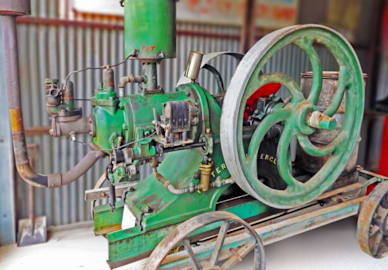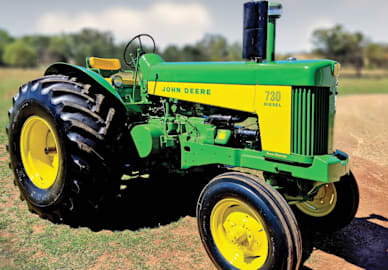Campbelltown Steam & Machinery Museum has a collection of diesel engines dating from the late 1930s, ranging in horsepower from 5 to 1,300, and weight from 80 kilos to 14 ton. Both Campbelltown Steam and I have collected them and ownership is with Campbelltown Steam.

Way back in 2000, a mate indicated there was a Detroit 6/71 available at auction. I was trying to concentrate on English diesels and so, showed little interest. It was a ganged pair of 6/71s driving an alternator, obviously a wartime gen set and very collectable, he said, and as I am easily diverted from the straight and narrow, I bought it.
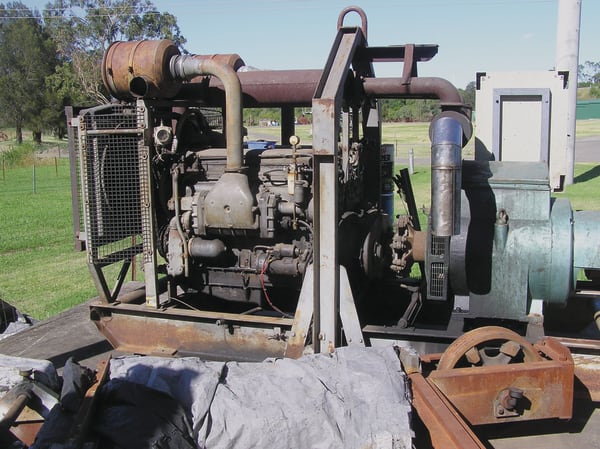
The engine numbers were a bit strange, not conforming with the numbering system indicated in a 1959 workshop manual I had acquired in my extreme youth, being Model 671LA24M, Serial No. 671 9063.
I contacted Tim Schaffer in the US and he gave me manufacturing numbers on a yearly basis – by 1944 they had manufactured 140,000 71 Series engines, which was a huge contribution to the war effort. This was the 9,000th engine in a series that ran to 180,000 by 1948, at which stage they changed the numbering system.
So this was a 1941 model, ganged as a pair of 6/71s to a 350KVA 50Hz alternator.
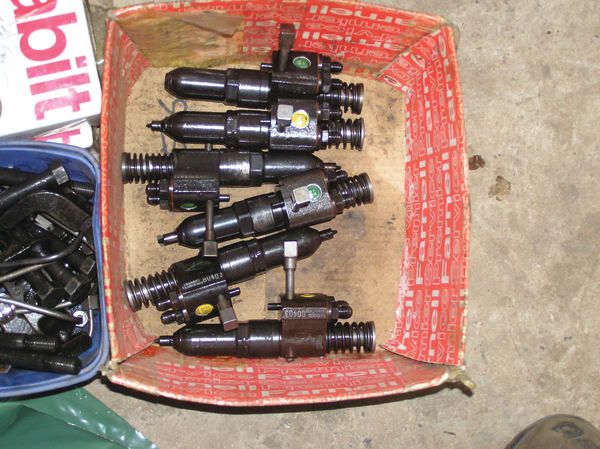
The engines ran at 2,200rpm and geared via the coupling gearbox to 1,500rpm for the alternator. One of the pair had external fuel piping and the other had internal fuel piping, so, sometime in 1941, this change was made. I have never seen another 71 Series with internal fuel pipes. The set was painted in Army drab, so, presumably in 1941, it came to Australia to power an Army camp. Some camp...at 350KVA! It was a fair contrast to contemporary English diesels which, with similar weight, would produce 90hp at 1,000rpm. These 6/71s produced 220hp at 2,200rpm

Sometime in 2003 I set it going, only requiring new engine oil and three injectors. I then put it away in my shed due to other priorities and continued displaying McLarens, Dormans, and Meadows at Campbelltown Steam and Machinery Museum (CSMM) near Campbelltown, NSW.
The visitors to CSMM rallies, and our members, showed a noticeable preference to Detroits over English engines, so in 2015 I retrieved the Detroit and displayed it at rallies. Instead of being stored in a shed with some climate control, it was on a slab under tarps, so it was deteriorating and, eventually in 2017, one engine (671 9870) refused to start. Investigation showed that the rack on one injector had seized at no fuel.
Detroit uses what is called a unit injector which, in the States, means the injector and pump are combined. In England this merely means the pumps are individual, driven by the engine camshaft rather than in a block of four or six driven by the pump camshaft. We removed the injector and freed up the rack, installed it, and set the engine going.
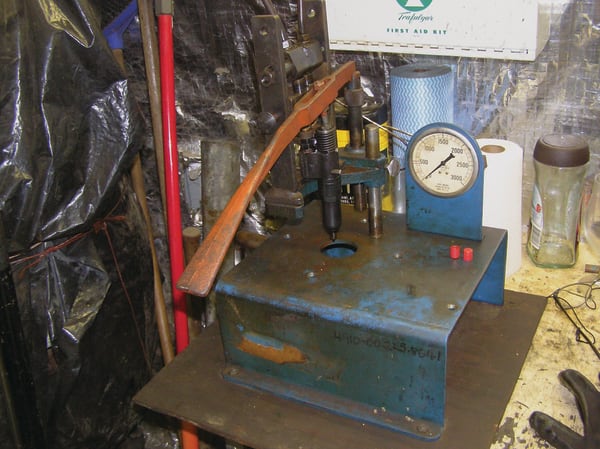
Checking the rack for seizure became a first step in running the engines until our just recently held last October member's meeting (a members only rally due to COVID19).
In this case, we found No.3 injector rack had stuck, so we freed it up and started the engine. It was unclutched from the gearbox and alternator and has a very light flywheel, and it was away! I don’t know what revs it got to, but she was really singing. I turned off the fuel (useless, as when we started it later, it ran quite a few seconds before I remembered to turn on the fuel again). Rob [who???] had a set of vicegrips on the rack shaft and he pulled hard.
It shut down but I suspect it had decided it had scared us enough or it simply didn’t want to die this time around and it corrected itself. No.6 injector was now stuck on zero rack and I suspect it had stuck on full rack and then, out of generosity, let go.
Quite a crowd collected so the roar must have been quite resounding. In fact I have never had a bigger crowd viewing the display, notwithstanding there being no visitors.

Over the years, CSMM has been given injector test equipment. We have two English Hartridge injector pump test benches and a third unit of uncertain use. We have two Kent-Moore testers for Detroit injectors and one Kent-Moore also of uncertain use. The Kent-Moore J 9787 is for 110 or larger injectors, but we have adapted it for 71 Series, two valve. Currently, we are learning how to use it. We suspect the third Kent-Moore is for Cummins pressure time injectors and we would welcome your readers' input.
We have also been given quite a quantity of CAV injectors and injector pumps. In the way of test equipment, we also have a fully instrumented Heenan and Froude water dynamometer which, I would expect, is capable of some 400hp. We have also been given some exhaust analysing equipment.
* Bob Mills
Can you help our engines?
If any of readers of The Old Machinery Magazine is a Detroit aficionado, we would like to meet you - the reason is sinister as we need members to demonstrate our 6/71s at rallies. For aficionados of more sophisticated engines, might I say we have a Napier Deltic, and for those of less sophisticated tastes we have a Crossley HRL. We have Ronaldson Tippett, Kelly & Lewis, and Southern Cross diesels for the Australian enthusiasts. In fact, we have some 40 diesel engines all awaiting the attention of enthusiasts and they all belong to CSMM and need to be demonstrated at rallies. If you are not an engine person, all these engines have Australian history which need to be researched and documented. Government grants are available for storage and display of these engines and, being simple engineers, we need members with more sophisticated talents than us to go for these grants. We also need a showman to lead us - in fact, we need a balanced team to render this collection into a prominent Australian diesel display. If Campbelltown is a distance too far, we can help arrange local accommodation for any member volunteering at the museum.
If you wish to become a part of the diesel engine group, I can be contacted on 0417 489 812 or email: bobmills534@gmail.com
or you can go to www.csmm.com.au (the CSMM website), pick up a membership application, and join us.
*Bob Mills


